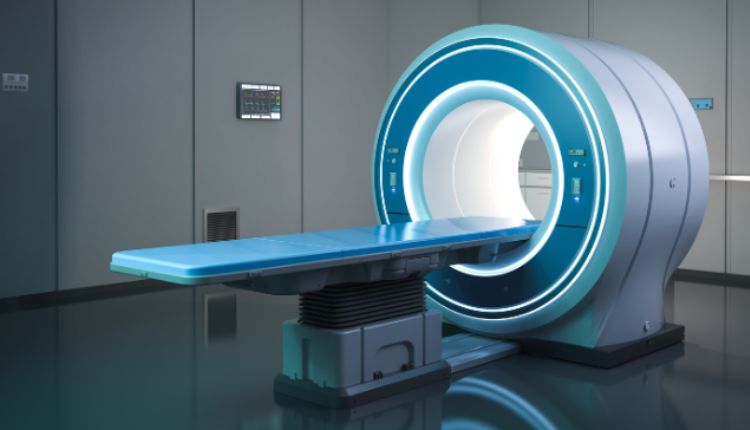Spinal cord injuries are among the most devastating and complex conditions seen in personal injury cases. Unlike broken bones or surface wounds, damage to the spinal cord isn’t always immediately visible, making diagnosis a critical challenge for both doctors and attorneys. That’s where advanced diagnostic tools—especially MRIs and neurological testing—play a vital role. These tools not only guide treatment decisions but also serve as the medical backbone of a legal case.
When the stakes involve lifelong disability, paralysis, or chronic pain, insurers and defense lawyers often challenge the severity or even the existence of a spinal injury. That’s why working with legal advocates who understand how to translate medical diagnostics into compelling legal evidence is so important. Law firms like Rose Klein & Marias, spinal cord injury lawyers, have deep experience connecting clinical records with courtroom arguments to ensure their clients receive the compensation they deserve.
Why Spinal Cord Injuries Can Be So Hard to Prove
Unlike a fractured arm visible on an X-ray, spinal cord injuries—especially those involving soft tissue or nerve damage—may not produce immediate or outward signs. Victims may experience radiating pain, weakness, tingling, or loss of function that doesn’t show up on basic tests. These symptoms, though real and life-altering, are often dismissed without advanced imaging or neurological evaluations.
This invisibility creates a legal vulnerability. Insurance companies may argue that a client is exaggerating their condition or attributing symptoms to preexisting issues. That’s why plaintiffs need medical evidence that is not only accurate but also objective, quantifiable, and supported by expert analysis. High-quality diagnostic imaging and thorough neurological assessments are essential to establish the legitimacy of the injury.
The Role of MRIs in Spinal Injury Claims
Magnetic Resonance Imaging (MRI) is the gold standard for visualizing spinal cord injuries. Unlike traditional X-rays, MRIs can detect herniated discs, spinal cord swelling, compressed nerves, and soft tissue damage. These images provide powerful, visual confirmation of an injury that may otherwise be dismissed as subjective or unprovable.
For attorneys building a personal injury claim, MRI scans can offer hard proof that links the accident to specific damage. In many cases, an MRI becomes a key piece of evidence that persuades insurance adjusters or jurors of the seriousness of the injury. The clarity and depth of these images help refute claims of exaggeration or malingering.
Neurological Testing: Mapping Function and Deficit
In addition to MRIs, neurological testing plays a critical role in assessing spinal cord damage. These evaluations examine reflexes, sensory perception, motor strength, and nerve conduction. Tests like electromyography (EMG) and nerve conduction velocity (NCV) studies provide objective data about how well nerves are functioning—or failing to function—after trauma.
Neurological assessments also help establish a baseline for future comparisons. This is important in personal injury law, where showing the progression—or lack of improvement—can support long-term care claims, permanent disability ratings, or the need for ongoing therapy. Accurate neurological testing strengthens a legal case by adding another layer of scientific credibility.
Establishing Causation Through Imaging and Testing
To win a spinal injury case, plaintiffs must show not only that they are injured, but that the defendant’s actions caused the injury. This is known as causation, and it can be fiercely contested in court. Medical diagnostics help bridge the gap between the accident and the resulting condition. Imaging taken shortly after the incident can demonstrate that the injury is acute and directly tied to the trauma.
When testing is delayed, the defense may argue that the injury occurred elsewhere or stemmed from a degenerative condition. Prompt MRIs and neurological exams counter these arguments, offering a clear timeline and clinical connection to the triggering event. The more contemporaneous and complete the records, the harder it becomes for insurers to deflect responsibility.
The Power of Expert Testimony
While diagnostic tests offer objective evidence, interpreting them in a courtroom requires expert testimony. Neurologists, radiologists, and spine specialists can explain the significance of test results in ways that jurors and judges understand. Their opinions carry weight, particularly when they link MRI findings and neurological deficits to the mechanism of injury described in the lawsuit.
An experienced spinal injury attorney will bring in trusted medical experts who can translate complex data into persuasive testimony. These experts not only validate the injury but also outline the long-term implications, such as chronic pain, mobility limitations, or the risk of secondary complications like muscle atrophy or depression.
Defending Against Preexisting Condition Claims
One common defense in spinal injury litigation is that the plaintiff had a preexisting condition that explains their symptoms. While this can complicate a case, it doesn’t eliminate the right to compensation. California law recognizes the “eggshell plaintiff” rule, meaning defendants must take victims as they find them, even if the injury is worse because of a prior condition.
Here, diagnostic testing can clarify whether an injury was aggravated by the accident and how it differs from any previous medical findings. Comparing old scans to new MRIs, or analyzing changes in nerve function over time, can be instrumental in proving that the accident caused a measurable deterioration. This distinction often influences the value of a settlement or award.
Using Diagnostic Tools to Project Future Needs
MRIs and neurological tests don’t just prove what happened—they help predict what comes next. For spinal injury victims, that future may include surgery, physical therapy, assistive devices, and permanent lifestyle changes. Imaging and test results allow doctors and legal teams to estimate long-term costs with greater accuracy.
Attorneys use these projections to build life care plans and calculate damages. The more detailed the medical evidence, the easier it is to secure funding for future needs. This is especially critical in cases involving younger victims, whose care may span decades. Proper documentation ensures that settlements reflect both present hardship and future realities.
Building a Case That Can’t Be Dismissed
In spinal cord injury cases, documentation is power. MRIs and neurological tests give attorneys the tools to overcome skepticism, counter defense tactics, and anchor emotional stories in clinical reality. When supported by credible experts and a thoughtful legal strategy, these tools can turn an invisible injury into a compelling, undeniable case.
By investing in the right diagnostics early and pairing them with experienced legal counsel, spinal injury victims can ensure that their stories are heard—and their needs are met for the long haul.






